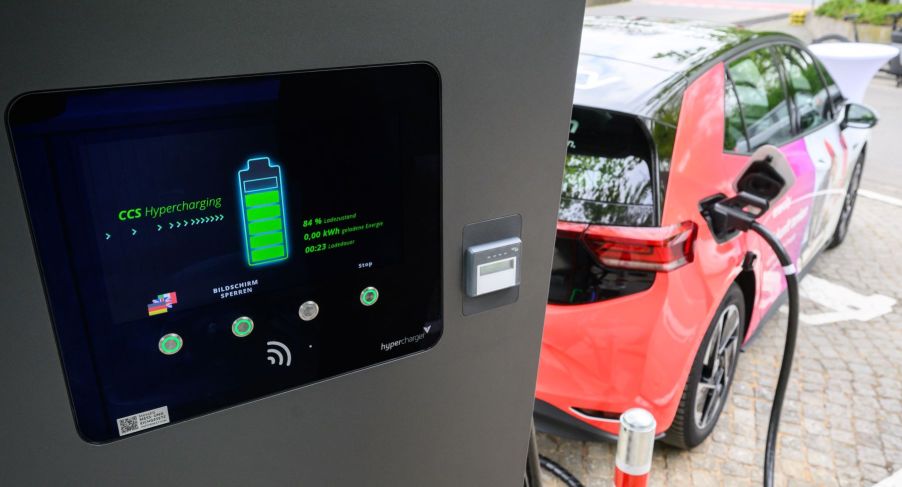
What’s the Difference Between Level 3 Charging, DC Fast Charging, and Superchargers?
There are so many different types of EV charging systems out there. You’ll find Levels 1-3 Charging stations, DC Fast Charging, and Tesla superchargers. What do they all mean? Here, we’ll explore how DC Fast Charging works and how it and Tesla Supercharger stations fit into the Level 3 systems.
How DC Fast Charging works
EVs require a direct current to charge up a vehicle’s electric battery. According to J.D. Power, home chargers use AC or alternating current, which must be converted to a direct current before charging your electric car. DC chargers are direct current systems, so there’s no waiting for it to convert to the proper method. Charging can begin immediately, making the whole process faster than your home’s outlet.
Typically these chargers are found in public places such as large retail stores. Places like Costco and Walmart offer charging in their parking lots. While the stores don’t usually have fees for using the charging units, the system that runs the chargers typically will. How much depends on the station you stop at and which company runs it.
You’ll find three types of systems to juice up your battery. First, there’s the CCS (combined charging system), the CHAdeMO (CHArge de MOve), and Tesla Superchargers. The CCS is the most common type of port you’ll come across, but the CHAdeMO is often the go-to connector for automakers, so it’s not uncommon to see these two at the same charging station.
Total energy output for DC systems ranges from 50 kW to 350 kW speeds. It all depends on how much your EV battery is rated to handle. Many vehicles can only take 50 kW, while some of the newer electric cars on the market can take up to 150 kW. Tesla vehicles can use either one if they have a special adapter to use it.
How does Level 3 charging differ from Level 1 and Level 2?

Chargers come in three different levels. Level 1 offers 120 volts, which you use on your phone and laptop at home. The electrical output from this level is usually 1.3 kW to 2.4 kW charging speeds. That means you can fill your battery in about two days if you use this method.
Level 2 offers 240 volts and also runs off the electricity in your home. You can get anywhere from 4 kW to 18 kW speeds from this plugin, which will take about 6-12 hours to charge up your battery.
Level 3 charging has the highest output of all the levels and will charge much faster than the other two methods. As a group that includes DC Fast Charging, this level requires a special cable to handle larger loads of electricity. You will typically find these chargers out in public, not in homes. According to NeoCharge, they’re also generally run by third-party companies. You’ll find stations run by EVgo and Electrify America, for example.
Where do Tesla Superchargers fit into the equation?
Tesla Superchargers also essentially fall into the Level 3 category. They offer fast charging using direct current, much like other third-party stations. The main difference is that these stations are only compatible with Tesla-branded vehicles. Currently, other EVs won’t work with Superchargers.
Tesla’s charging infrastructure uses anywhere from 150 kW to 250 kW speeds, depending on what the particular station has. However, a good portion of these chargers use higher speeds. The network of chargers is found in approximately 2,500 locations worldwide, and many of the units at these stations can handle more than one vehicle charging at a time.
In the future, Elon Musk plans to open up the Tesla network so that other electric vehicles can use these Superchargers. Still, there aren’t any specific dates when that will happen. However, we know it has opened up in the Netherlands as a trial run, according to Tom’s Guide.


